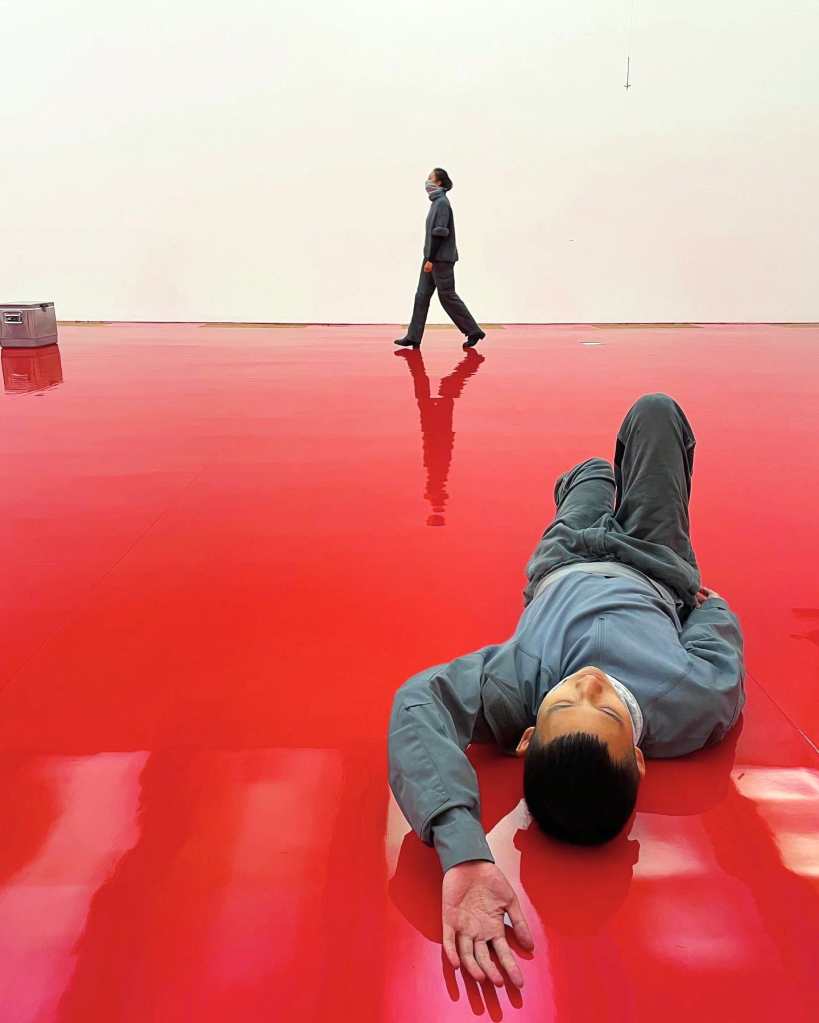
Visitors are greeted by an eerie echo of operatic voices floating up the spiral, brutalist staircase as they make their way to the third floor of the Tai Kwun Contemporary exhibition space in Hong Kong.
The operatic work, One Hundred Nine Minus (2021) is the first of a three-part video, sound, and performance installation titled ‘Echo, Moss & Spill’, by Chinese-born Berlin-based sound artist and experimental music producer, Pan Daijing.
Pan uses movement, sound and improvisation to create avant-garde performances that are boundary defying. At times they are atmospheric walls of sound that are cinematic, and at other times other-worldly and dystopian. The artist’s previous experimental music— throbbing industrial sounds and dark synths, shrieks and wails—cemented her place in the art and music world, performing and exhibiting internationally at numerous venues and institutions, including Tate Modern and Barbican Centre, London; Haus der Kulturen der Welt, Berlin; Palais de Tokyo, Paris; Elbphilharmonie, Hamburg; Berliner Festspiele, Kraftwerk, Berlin, as well as Sonar, Unsound, and Berlin’s legendary techno temple, Berghain.
But the music composition in this recent installation is a departure from the gritty industrial sounds of Berghain. The operatic voices set a melancholy tone to the sonic and visual journey upon which visitors embark. The sound is a thread connecting visitors to the space, to each other, and the proceeding video and performance installation.
Pan uses movement, sound and improvisation to create avant-garde performances that are boundary defying.

On the third-floor of the exhibition space visitors are led to a blacked out room with a two-channel video installation. Shot in Hong Kong with a cast of local performers, the video has a dystopian, enigmatic and sci-fi feel to it which brings to mind Russian filmmaker Andrei Tarkovsky’s Stalker (1979). Performers make their way through an unidentifiable landscape, a dark tunnel leading to light in a journey of hope, despair and longing. Like the Russian filmmaker, Pan is more interested in inner space than outer space, creating a journey that is metaphysical as much as it is physical, woven throughout with psychological tension.
Adjacent to the video installation is a doorway fringed by transparent red plastic, like that found in an abattoir or butcher. Mirroring the journey of the film, visitors step from darkness into a brightly lit, red vinyl-floored exhibition space with industrial-looking tiered seating in one corner. The effect of the red glossy floor is of a room awash with blood, violent and primal. The same cast of performers from the film are this time dotted across the exhibition space, clad in monochrome grey outfits and black boots, suggestive of the military or penitentiary.
The thrum of a single bass note is repeated over and over again like a booming metronome of dread, punctuating the slow moving performance. On occasion the performers’ voices unite in a beatific one-note hymn, or the sound of a slap or bang pierces the tension in the air as a performer hits a wall or surface. Some performers stand alone, others sit or stand together. They crawl, sit, engage in small repetitive and seemingly mindless gestures, and at other times they freeze in space, as if mid-thought. They walk around slowly, listlessly, as if trying to find their place. This performance plays out every day for six-hours for the duration of the installation (Dec 16, 2021 – Jan 2, 202).
Pan is more interested in inner space than outer space, creating a journey that is metaphysical as much as it is physical, woven throughout with psychological tension.
The choreography of gestures is a mirror of the video performances, but they are also familiar as the small gestures we perform on ourselves and on one another every day, whether consciously or not. Gestures rooted in trauma, grief, memory, yearning, physical manifestations of psychological and emotional pain— clinging, touching, stroking, scratching, embracing, slapping, tapping. They are the thousands of gestures that make up our physical language.
A cluster of black, scrawled names —scribbled by the performers—tattoos the walls like prison graffiti, growing into frenzied abstract smudges as the performance days progress. They are an affirmation of existence—‘I was here’— and of an inherent longing to claim space, as much as they are an act of boredom or a part of the performance.
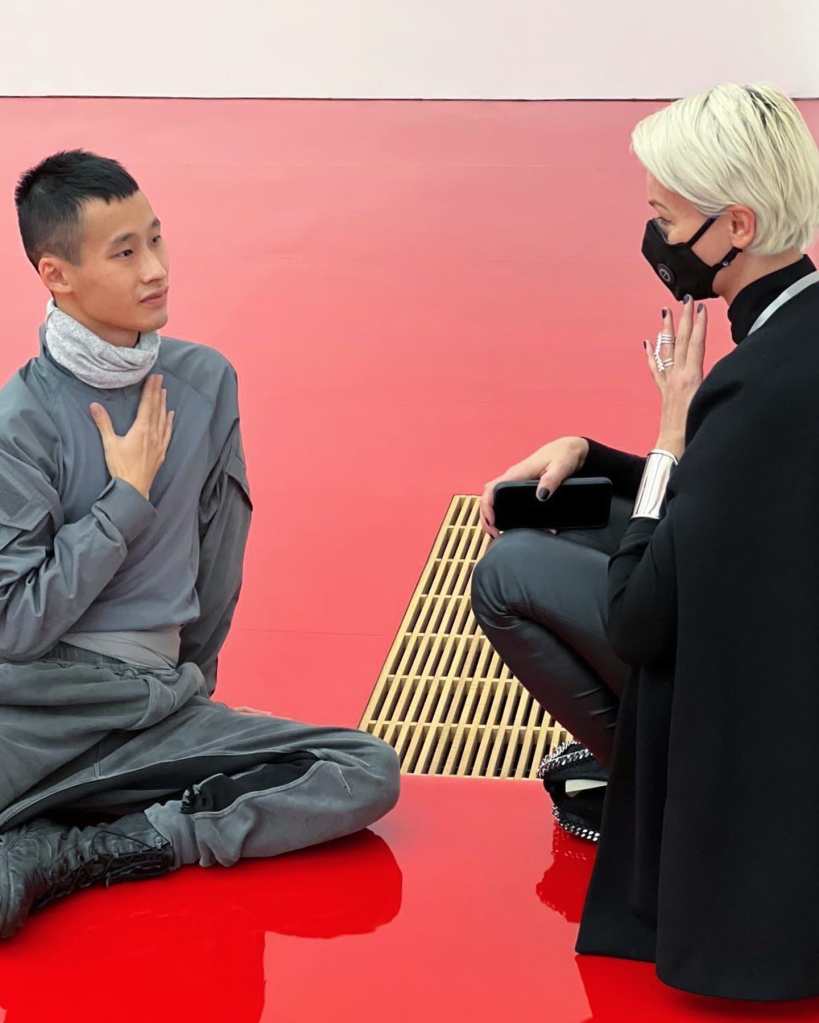
The performance allows for improvisation and real-time interaction with the audience as audience members and performers bleed into one another’s spaces. While many visitors sit watching from the seating area, others are bolder and sit or stand on the red floor as the performance unfolds around them. Pan injects an element of confrontation and tension into the work as the performers move amongst the audience, touching them, gazing at them, reaching out for a connection.
Some visitors reciprocate the gestures, an energy exchange between two people silently listening to one another, building trust and a connection. Other visitors ignore the performer reaching out to touch them, prompting the viewer to examine their own fears, longings and anxieties. The performance— which can be confronting in this covid-riddled era where social distancing has become the norm— invites guests to experience intimacy and vulnerability with a complete stranger, and to sit with their own discomfort in the interaction. But the artist also plays with power dynamics. Audience members can feel awkward, vulnerable, or powerful in denying or reciprocating a touch. Who has power? Who gives it and who takes it? Is it the performer, generously reaching out to the viewer, offering the possibility of a connection, an exchange? Is it the viewer, denying reciprocation? Or the viewer allowing themselves to be open and vulnerable?
At times there is a feeling of being trapped or exposed in Pan’s performance. In order to leave the room while the performance is playing out, the viewer must cross through the space, becoming a conspicuous and an unwitting participant in the performance. There is no such thing as a passive observer of Pan’s performances. ‘Echo, Moss, Spill’ is a world where the past and present, dreams and consciousness, performer and audience, the choreographed and spontaneous merge. It unpacks interior life, exploring fear, loneliness, memory, our need for intimacy, and for a sense of belonging.
After some time passes, Pan’s voice washes over the performance space from a speaker, filling the room with words from Margaret Atwood’s poem, ‘They Are Hostile Nations’: “We need each others’ breathing, warmth, surviving is the only war we can afford, stay walking with me.” The poem, written in the historical context of the Cold War and the Berlin Wall, is just as pertinent today. In the midst of chaos, besieged by problems, fear, divisive politics and ideology, we need cooperation and human connection. We need each other.
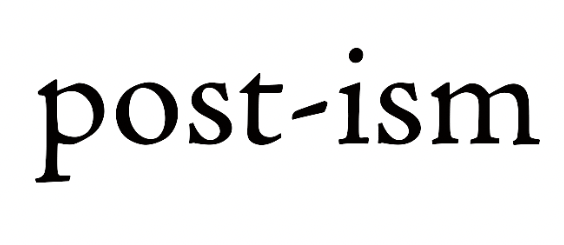

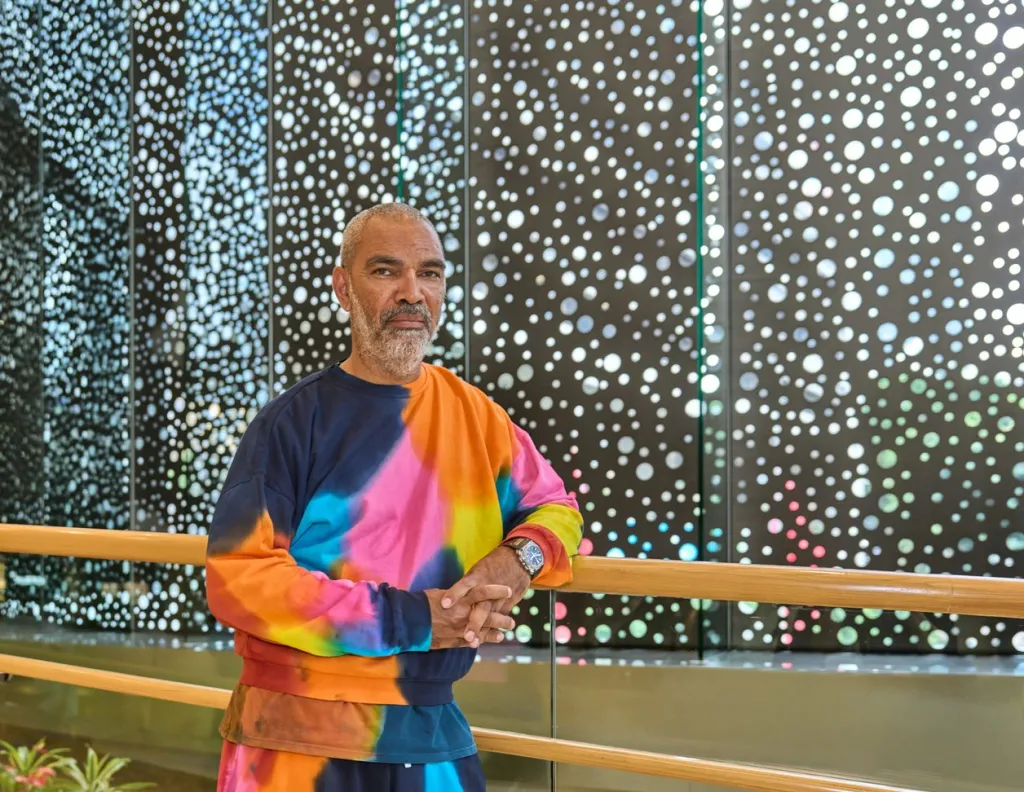

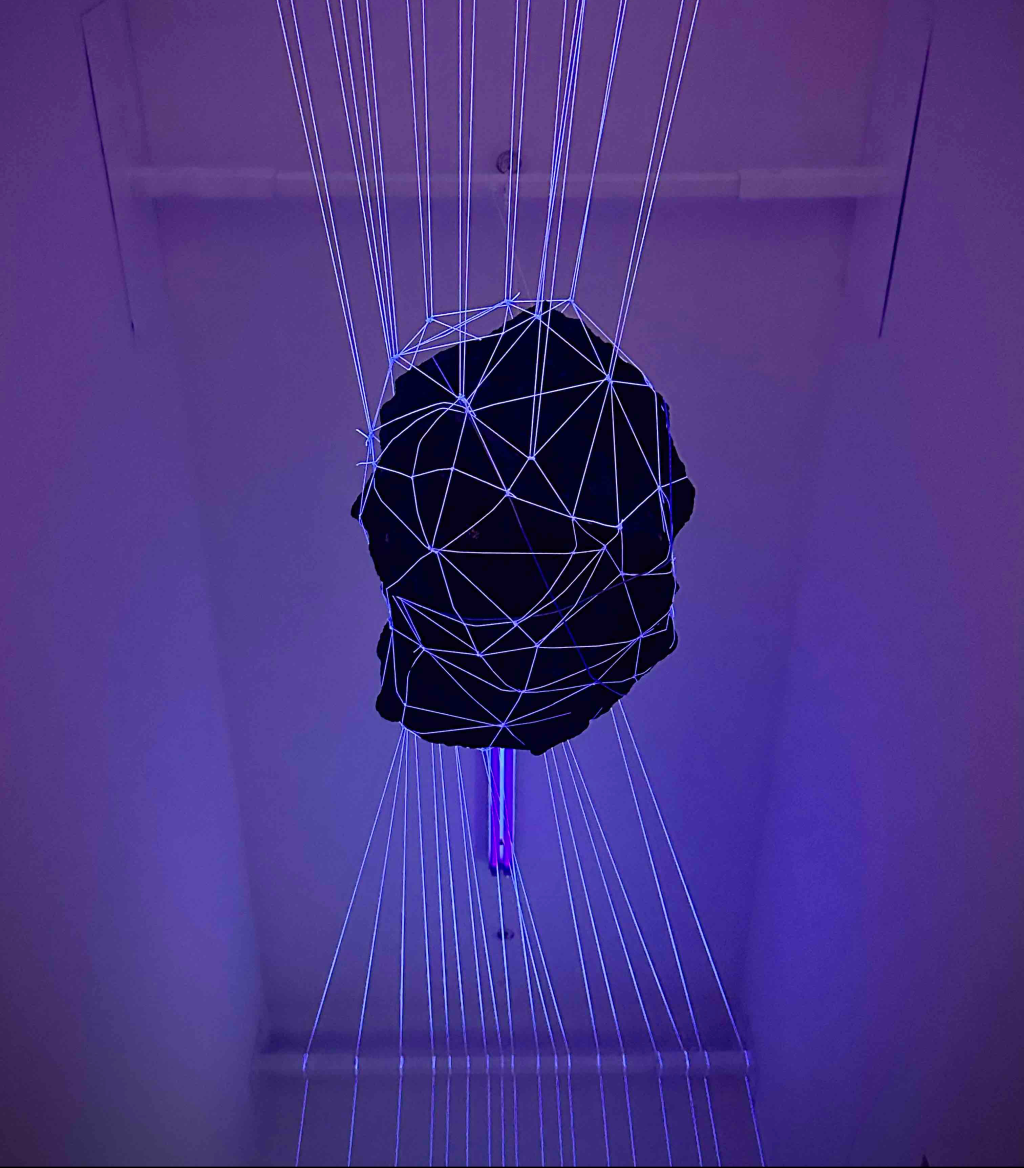

You must be logged in to post a comment.